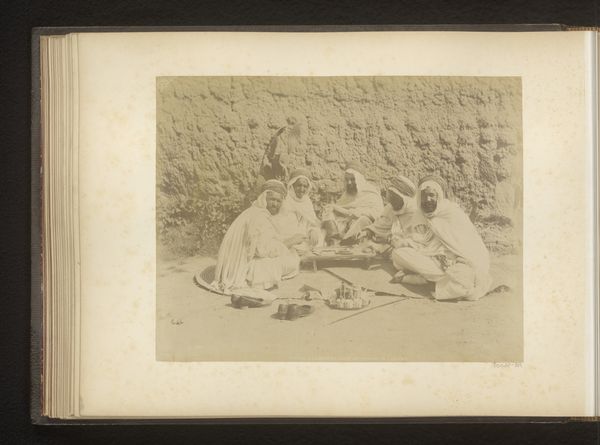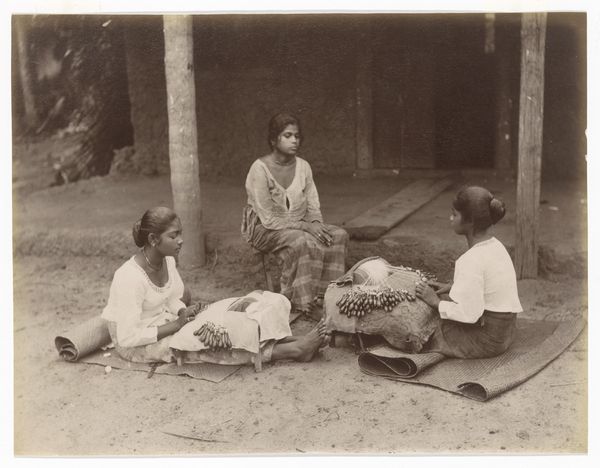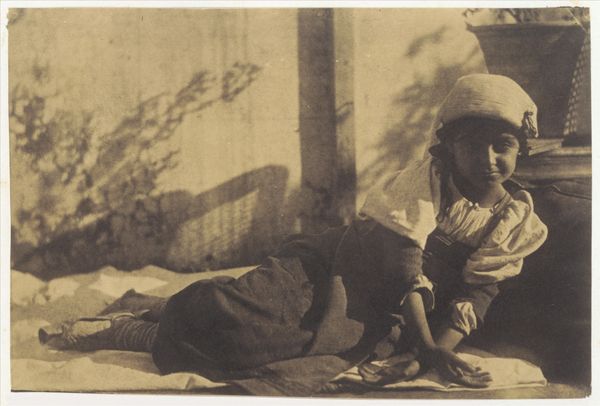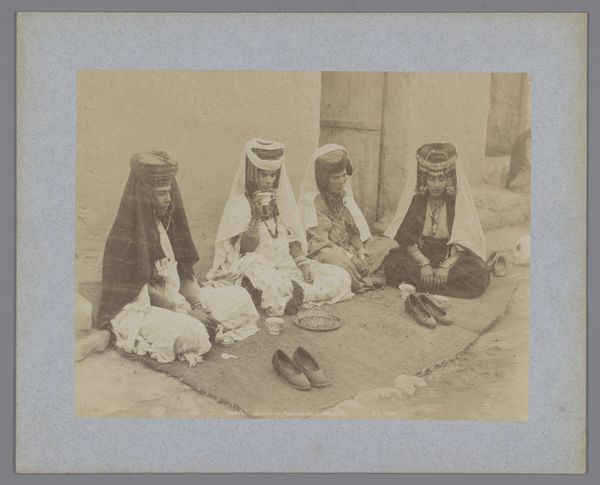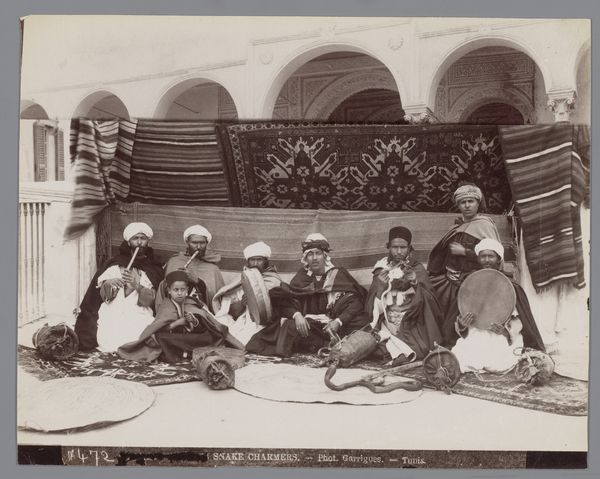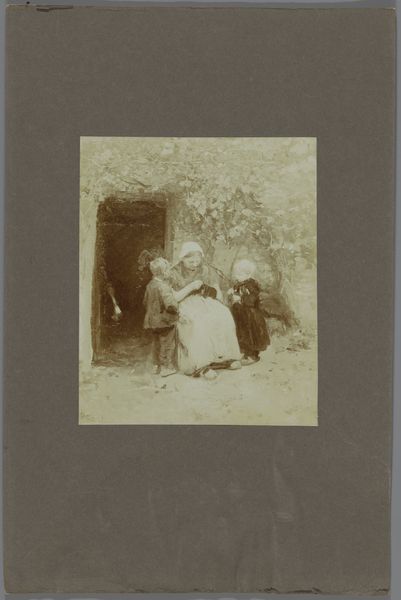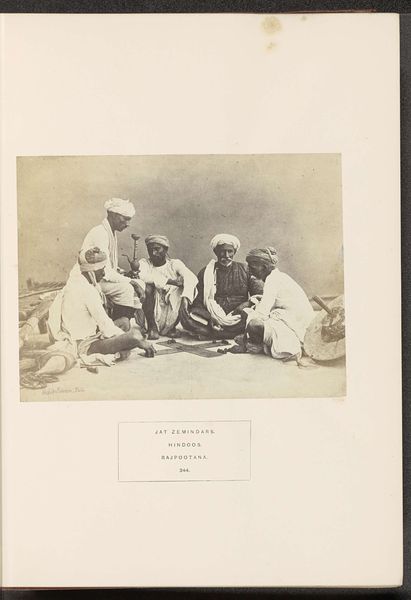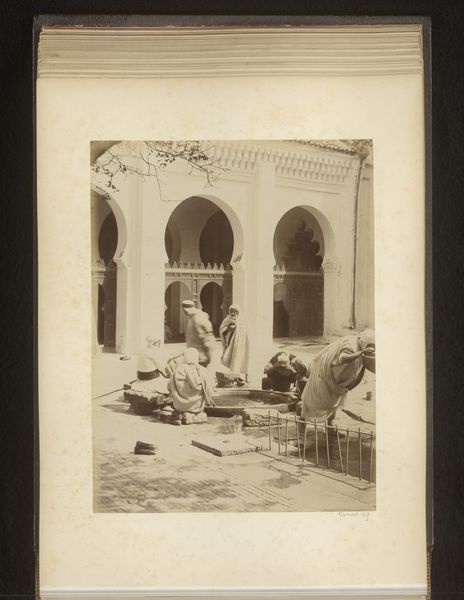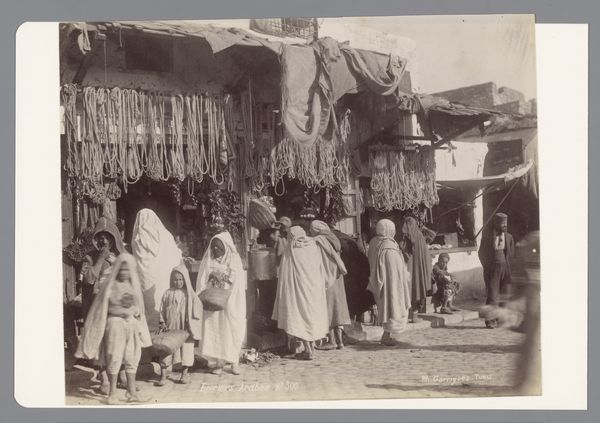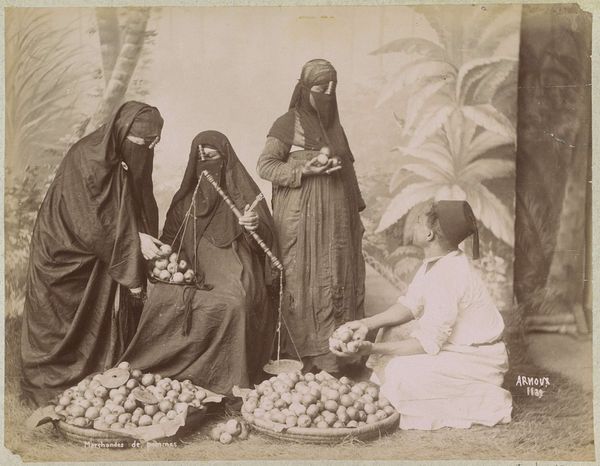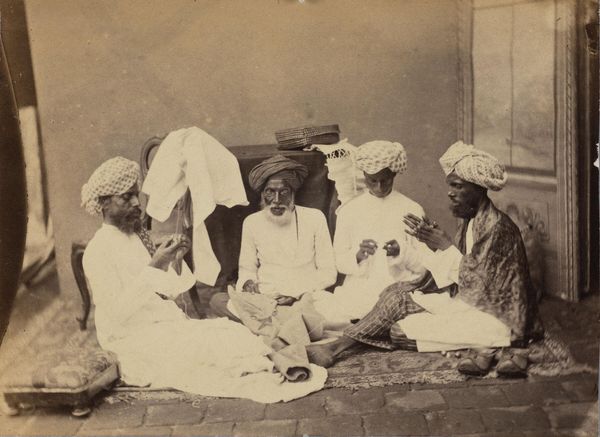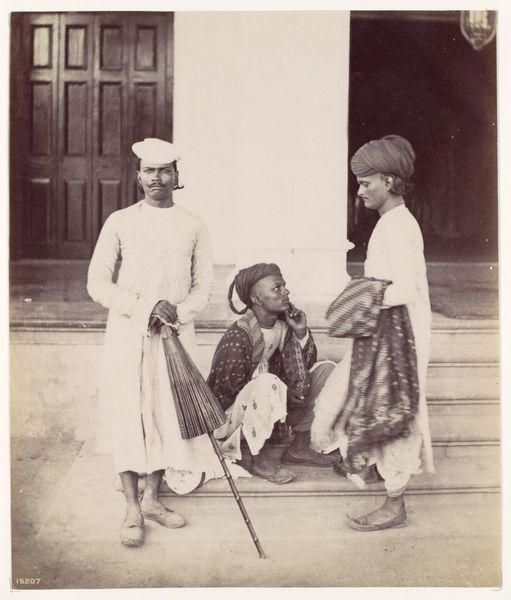
photography
#
portrait
#
street-photography
#
photography
#
orientalism
#
genre-painting
Dimensions: height 211 mm, width 275 mm
Copyright: Rijks Museum: Open Domain
Curator: This photograph, attributed to G. Lekegian & Co., is titled "Straatverkopers, mogelijk in Egypte," placing street vendors in Egypt, and was taken sometime between 1887 and 1925. What are your initial thoughts? Editor: The light creates a tranquil mood, despite the subjects being street vendors; almost idyllic, highlighting a casual and communal moment rather than the labour itself. There is such a sense of stillness, which is quite striking, given what one expects of street scenes. Curator: Note the material realities shown – the woven basket laden with what appears to be dates, the large water jug strapped to the man's back. Consider these objects: the basket likely hand-woven, the jug carefully crafted pottery for practical purposes. It really puts a human face to the work, showing the craftsmanship present even in everyday street vending. Editor: That’s interesting to consider when contextualized with the traditional dress and wares. These costumes—the head coverings, and the draped fabrics--they're imbued with cultural meaning. Water, as presented in the jug, could signify purity and sustenance in such a climate. The fruit she offers likely represent hospitality and even an exotic luxury to some audiences. The photographer definitely utilizes that symbolic contrast. Curator: Exactly. And even the photographic process itself must be considered. What chemicals, labor and equipment went into its creation, preservation, and consumption? Someone selected that image out of a larger collection for purchase, shaping its distribution as a collectible piece of orientalist photography. Editor: Right. Plus, the photograph flattens it, simplifying a far more nuanced and likely, challenging reality, and selling that distillation to Western consumers who, through visual short-hand, easily digested those images. Curator: A point well-taken. The photograph is an artefact of its time, isn’t it? Thank you for revealing those layered interpretations, by reminding us of both symbolic communication and modes of production at work. Editor: My pleasure. Seeing the human symbols and material structures here together help the whole composition reveal a culture of exchange, be it commercial or photographic.
Comments
No comments
Be the first to comment and join the conversation on the ultimate creative platform.
